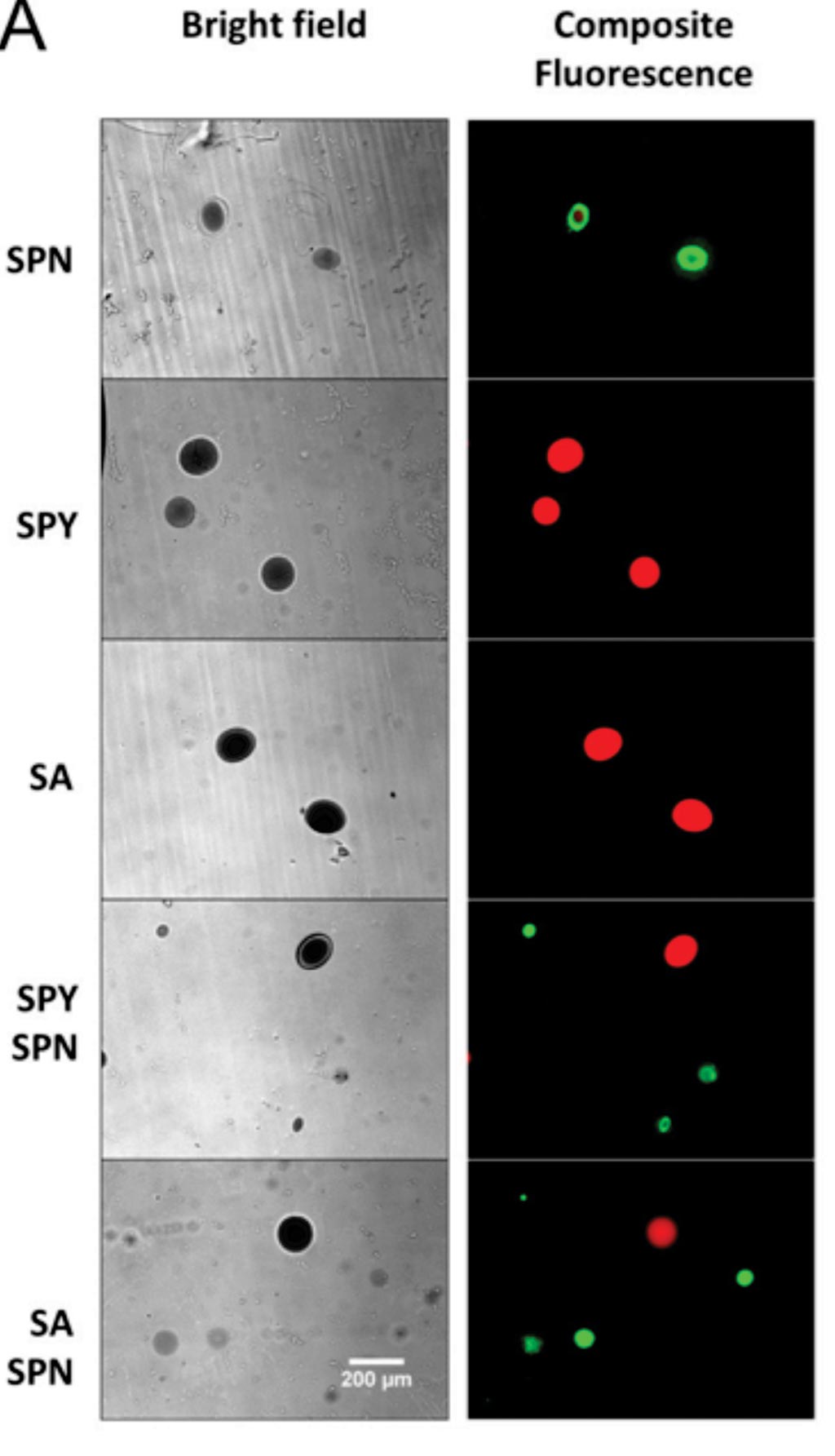Lipid Vesicles Replace Blood in New Bacteria Test
By LabMedica International staff writers
Posted on 04 Oct 2017
Beta-hemolytic bacteria are those pathogens that are frequently to blame for illnesses that are spread among school children like Streptococcus, or those like Listeria that cause many foodborne illnesses. The current test involves streaking a patient sample onto blood agar plates.Posted on 04 Oct 2017
Tests do exist for the detection of particular beta-hemolytic species; however, these approaches are commonly based on the detection of genetic or antigenic determinants and not beta-hemolysis. Examples include the antibody–antigen tests, nucleic acid-based assay and more recent approaches using bacteriophages engineered with reporters.

Image: Beta-hemolytic colonies are distinguishable in agar co-cultures with alpha hemolytic S. pneumoniae. (A) Fluorescent and bright-field images of pure and admixed bacterial colonies in BHI agar with L-Hoechst (Photo courtesy of Temasek Life Sciences Laboratory).
Scientists at the Temasek Life Sciences Laboratory (Singapore) and their colleagues used the original blood agar test as inspiration for their new one. In the new assay, they placed fluorophores inside liposomes, which are lipid vesicles that have been used for controlled drug release. While in the liposome, the fluorescent molecules are packed together and are quenched, or dark, but when in the presence of beta-hemolytic bacteria, the liposome is broken open, the molecules are released, and they fluoresce.
The investigators used bacterial strains which were streaked on sheep blood agar and incubated at 37 °C overnight to check for hemolytic activity. The new test, called BETA, distinguished beta-hemolytic bacteria from control bacteria with 100 % accuracy in six hours on plates, and with 99% accuracy in liquid broth in an hour. The scientists say the method is rapid and cost-effective, which makes it ideal for diagnostics in developing countries. They also noticed that colony fluorescence associated with beta-hemolysis was qualitatively different from background fluorescence associated with control bacteria.
The authors concluded that BETA’s timeliness opens the door to applications once limited by the tardiness of blood agar cultures. With increased speed, gold standard throat cultures based on BETA can now be used as a first-choice diagnostic test (as opposed to a confirmatory assay) for bacterial pharyngitis. BETA’s scalable form-factor (multiwell plates) and low reagent costs (∼USD 0.02 per assay) make it suitable as a sensitive high-throughput triage method for in-plant food safety testing to complement pathogen-specific assays such as phage detection. The study was published on September 20, 2017, in the journal ACS Sensors.
Related Links:
Temasek Life Sciences Laboratory














